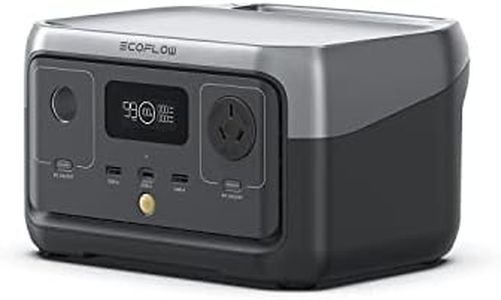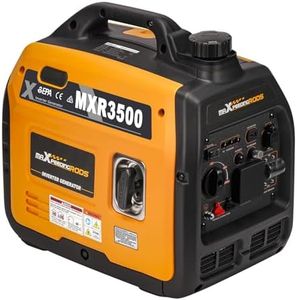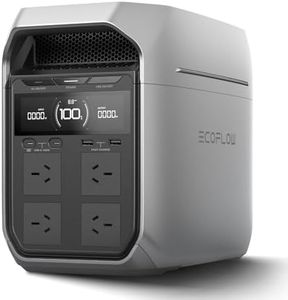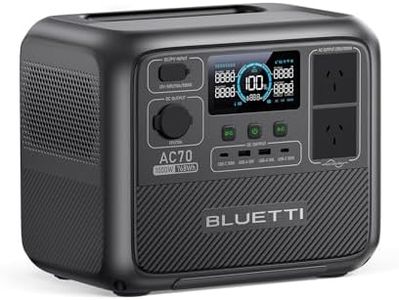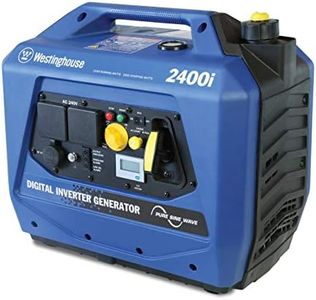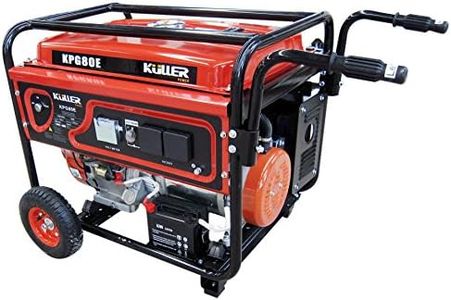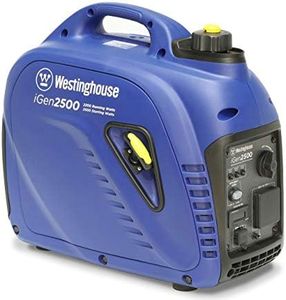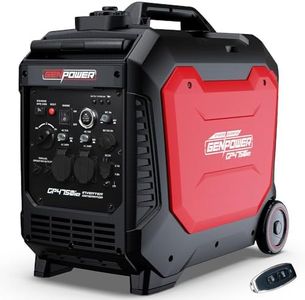We Use CookiesWe use cookies to enhance the security, performance,
functionality and for analytical and promotional activities. By continuing to browse this site you
are agreeing to our privacy policy
10 Best Portable Electric Generator
From leading brands and best sellers available on the web.Buying Guide for the Best Portable Electric Generator
Choosing a portable electric generator is all about knowing your power needs and understanding where and how you intend to use it. Generators come in many sizes and types, so getting familiar with the key features will help you select one that keeps your essential devices running comfortably during outages, camping trips, or outdoor activities. Consider where you’ll use the generator (home backup, camping, job site), how much equipment it needs to power, and how important quiet operation, portability, or runtime is to you. Taking a little time to list out what you want to run and where you’ll use the generator leads to a much more satisfying purchase.Wattage (Power Output)Wattage tells you how much electrical power the generator can provide at once and is often given as starting (surge) watts and running (rated) watts. Starting watts are what’s needed to start up electrical devices, while running watts are what’s required to keep them running. Small generators (under 2000 watts) are good for charging electronics and running a few small appliances. Mid-size options (2000–4000 watts) can handle several larger appliances or tools, while larger generators (over 4000 watts) can power many devices at once, even in a small house. Evaluate what you need to run at the same time, total up their wattages, and pick a generator that can handle that load with a bit of room to spare.
Portability (Weight and Size)Portability is all about how easy it is to move and store your generator. Smaller, lighter units are simple to carry with one hand and fit in a car trunk, making them ideal for camping or tailgating. Medium options may come with wheels and handles to roll them around, and large generators often require two people or have built-in wheels/carts for transport. If you need to frequently move the generator or use it in different places, a lightweight, compact model may be best. For home backup where it stays mostly in one spot, portability is less critical.
Fuel Type and Tank CapacityGenerators typically run on gasoline, propane, or sometimes both (dual fuel). Gasoline is more widely available, while propane stores indefinitely and is safer to keep around, but may give a bit less power. Tank size determines how long the generator will run before you need to refuel; small tanks mean more frequent stops, while larger tanks let you run longer during outages. For quick outings, a small tank may be fine, but for extended emergencies or continuous use, look for larger capacity or easy fuel availability.
Noise LevelGenerators make noise, measured in decibels (dB). Quiet units operate around 50–60 dB (like a normal conversation), while standard ones can reach 70–80 dB or more (like a vacuum cleaner). Campsites, campgrounds, and neighborhoods often have noise restrictions, so a quieter generator is necessary for those environments. For home backup in rural or unpopulated areas, noise may not matter as much.
Outlets and ConnectivityThis spec tells you what kind of devices you can plug into the generator: standard household outlets, 12V car outlets, USB ports, or even special sockets for RVs. If you’re looking to charge phones and laptops, make sure USB or low-voltage outlets are available. Running a fridge, sump pump, or tools may require 120V or 240V outlets. Review what connections your devices need and ensure the generator has those specific outlets.
Inverter TechnologyInverter generators provide 'cleaner' power, which is safer for sensitive electronics like laptops and phones. While traditional generators are generally noisier and heavier, inverters are quieter, lighter, and more fuel-efficient but may cost more. If your main goal is to run small electronics safely or reduce noise, go for a generator with inverter technology. For rugged tools or big appliances, a standard generator will often suffice.
Run TimeRun time tells you how many hours the generator will run on a full tank (usually measured at 25% or 50% load). Short run times (3–5 hours) mean you’ll need to refuel often, while longer run times (8–12 hours) provide overnight operation or all-day use without a fill-up. If you want uninterrupted power through the night or during a long job, favor a longer run time.

